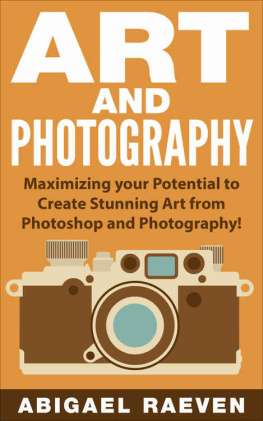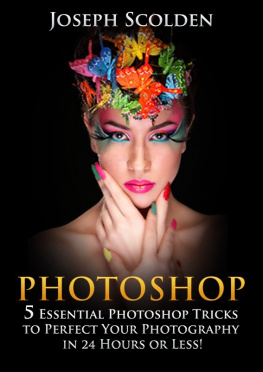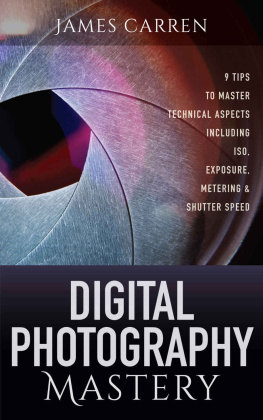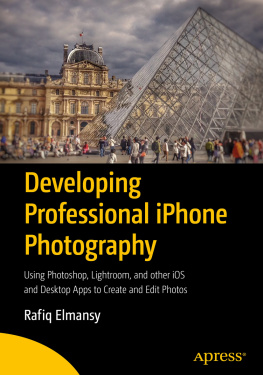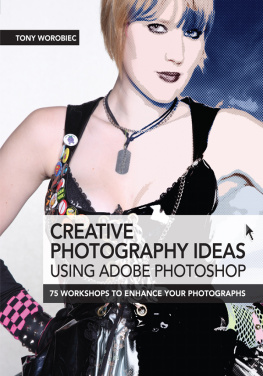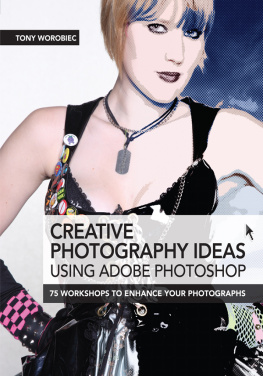ART AND PHOTOGRAPHY
Maximizing Your Potential to Create Stunning Art from Photoshop and Photography!
By: Abigael Raeven
Table of Contents
Copyright 2014 by Abigael Raeven - All rights reserved.
This document is geared towards providing exact and reliable information in regards to the topic and issue covered. The publication is sold with the idea that the publisher is not required to render accounting, officially permitted, or otherwise, qualified services. If advice is necessary, legal or professional, a practiced individual in the profession should be ordered.
- From a Declaration of Principles which was accepted and approved equally by a Committee of the American Bar Association and a Committee of Publishers and Associations.
In no way is it legal to reproduce, duplicate, or transmit any part of this document in either electronic means or in printed format. Recording of this publication is strictly prohibited and any storage of this document is not allowed unless with written permission from the publisher. All rights reserved.
The information provided herein is stated to be truthful and consistent, in that any liability, in terms of inattention or otherwise, by any usage or abuse of any policies, processes, or directions contained within is the solitary and utter responsibility of the recipient reader. Under no circumstances will any legal responsibility or blame be held against the publisher for any reparation, damages, or monetary loss due to the information herein, either directly or indirectly.
Respective authors own all copyrights not held by the publisher.
The information herein is offered for informational purposes solely, and is universal as so. The presentation of the information is without contract or any type of guarantee assurance.
The trademarks that are used are without any consent, and the publication of the trademark is without permission or backing by the trademark owner. All trademarks and brands within this book are for clarifying purposes only and are the owned by the owners themselves, not affiliated with this document.
Introduction
Digital art is one of the most impressive means of expression nowadays, when artists like Leonardo da Vinci or Degas are no longer found. But this doesn't mean that art is less stunning if it is made by technical people who work with a computer to layer the shades; Photoshop painting can be amazing!
Before the digital era, graphic designers worked by blending things together from different sources, to create artwork. When Photoshop kicked in, designers had a new medium to play with different sources and create amazing photos.
By reading this book you will learn that digital art is real and it doesn't limit to adjusting Kardashian's curves you can design amazing posters, draw paintings and play with textures to achieve abstract works of art. Attention to detail is important and knowing the advantages of hidden filters and making your own brushes is critical. Experimenting is the key towards successful designs, so don't be afraid to step outside your defined circumference and try something new, as this is the real way of creating art.
Read the book to learn how to decompose paintings and recognize the characteristics of each painting type out there, and then recompose them all in your own way, turning a plain stock photo or a mobile photo into a work of art.
Without more talk, let's dive into the world of Photoshop!
Chapter I Essential tools and techniques for image manipulation
The first step in creating stunning works of art with Photoshop is experimenting.
This sounds strange, but before you start working on a project you have to know what functions to use and what techniques work best for each situation. This means you need to master the tools of Photoshop, a task that can only be accomplished by experimenting over and over again. Not even great digital artists stop mixing techniques and experimenting with the tools as this is the key to successful art.
Now I can't teach you each and every tool in Photoshop, so I will start by reviewing some of the most common and effective methods used for photo manipulation. With Photoshop you can create anything you can possibly imagine, so you just have to persevere and keep patience, as stunning pieces of art take time to complete.
Shadows
One can't emphasize enough on the importance of shadows in Photoshop. Using shadows you can add a realistic wave to the wildest images and can enhance the importance of specific ideas to transmit a certain message. In the real world, everything has a shadow and you have to translate that in Photoshop, on the canvas, if you want your art to look realistic in the way a flying car can be realistic.

There are many ways to make a shadow, depending on what type of focus you want to add to the image. The first tool is the built-in shadow feature provided by Photoshop, which adds subtle shadows to your objects. For a more consistent shadow, you can duplicate the object, turn it black and then add a Gaussian blur to it. Further manipulation consists of fine tuning the shadow by adjusting its opacity level, so, your flying car can have a semi-translucent shadow.
Textures
Textures can add a grip to your image, but artists use them to blend everything together, along with color filters. Blending is very important in Photoshop, just as it is in makeup art, so when you want to create an even feeling to your image, you have to pick the right textures, in order to add the right depth to the entire image. For example, if you work on an image featuring a rusty car you want your texture to match that rusty feel, so you should pick a grungy texture to blend well with the car.
However, skilled artists use one texture for the main object in the picture and a contrasting one for the rest of the picture, to emphasize the main object. This makes things a lot harder, but the results can be stunning, if you know how to blend everything by using shadows and color blending.
Color blending
If shadows and textures are not enough to make the whole picture come together, you need to use color blending. Gradient Maps and Photo Filters are used to add or reduce the colors in areas of the image in order to give your Photoshop artwork a boost of color and make it all more coherent.
There are colors that blend well together naturally, like white, pink and blue; others are not so well behaved and you have to adjust the amount of gradient in each one to make them blend in.
Proportions
In Photoshop proportions are very important, as they can make or break a piece of art. Playing with proportions is not an easy task, as creativity has no limits, but you need to have a critical eye and assess if a large horse flying on top of a house is better than a proportioned horse, compared to the house. Proportions can add realism to your image, so when you design an abstract scene, you can adjust the proportions so the viewer can relate to the image easier and accept it as a piece of art.
Proportions also help to add depth to your images, which is very important when you want to catch the viewer's attention and literally hypnotize him. The far away objects are supposed to be smaller than the closer ones, so stick to the rule if you want to mix a set in harmony.
Stock photos are your base
This is neither a technique nor a tool, but it is a critical point in creating stunning images with Photoshop, as picking out the right photos to work with can make your life easier and can lead to that stunning effect you are looking for when you create digital art.

